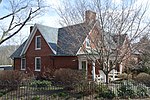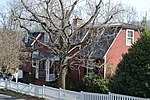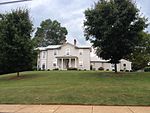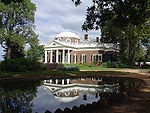Woolen Mills Chapel
19th-century churches in the United StatesCharlottesville, Virginia Registered Historic Place stubsChurches completed in 1887Churches in Charlottesville, VirginiaChurches in Virginia ... and 8 more
Historic American Buildings Survey in VirginiaIndividually listed contributing properties to historic districts on the National Register in VirginiaNRHP infobox with nocatNational Register of Historic Places in Charlottesville, VirginiaProperties of religious function on the National Register of Historic Places in VirginiaUse mdy dates from August 2023Victorian architecture in VirginiaVirginia church stubs

Woolen Mills Chapel is a historic chapel located at 1819 E. Market Street in Charlottesville, Virginia. The Late Victorian building was constructed in 1887.It was listed on the National Register of Historic Places in 1982, and included in the Woolen Mills Village Historic District in 2010.
Excerpt from the Wikipedia article Woolen Mills Chapel (License: CC BY-SA 3.0, Authors, Images).Woolen Mills Chapel
Marchant Street, Charlottesville
Geographical coordinates (GPS) Address Nearby Places Show on map
Geographical coordinates (GPS)
| Latitude | Longitude |
|---|---|
| N 38.021666666667 ° | E -78.456666666667 ° |
Address
Marchant Street 2049
22902 Charlottesville
Virginia, United States
Open on Google Maps









